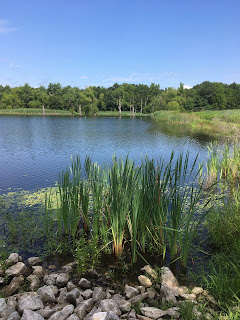Hoping to get a good night's sleep before driving back to Missouri, I was awakened by eerie cries, echoing from one of our Littleton farm pastures; I immediately recognized the screams as those of a red fox, indicating that our recent visitor intended to stay. While female red fox often deliver these harrowing sounds during the mating season, that activity does not occur until late winter. Too tired to seek the source or the purpose, I concluded that it may have been a territorial rite by our new resident; fortunately, whatever their motivation, the screams soon ended.
Hosting wild neighbors can be a mixed blessing for human homeowners. While we enjoy observing their behavior, especially when youngsters make an appearance, we must also accept their instinctual noisiness, their scat, their musky scent markings and the damage that they may inflict on roofs, siding, vegetation, gardens and out-buildings. I'm generally more than willing to accept those natural consequences but the alarming screams at 3 AM tested my patience!


